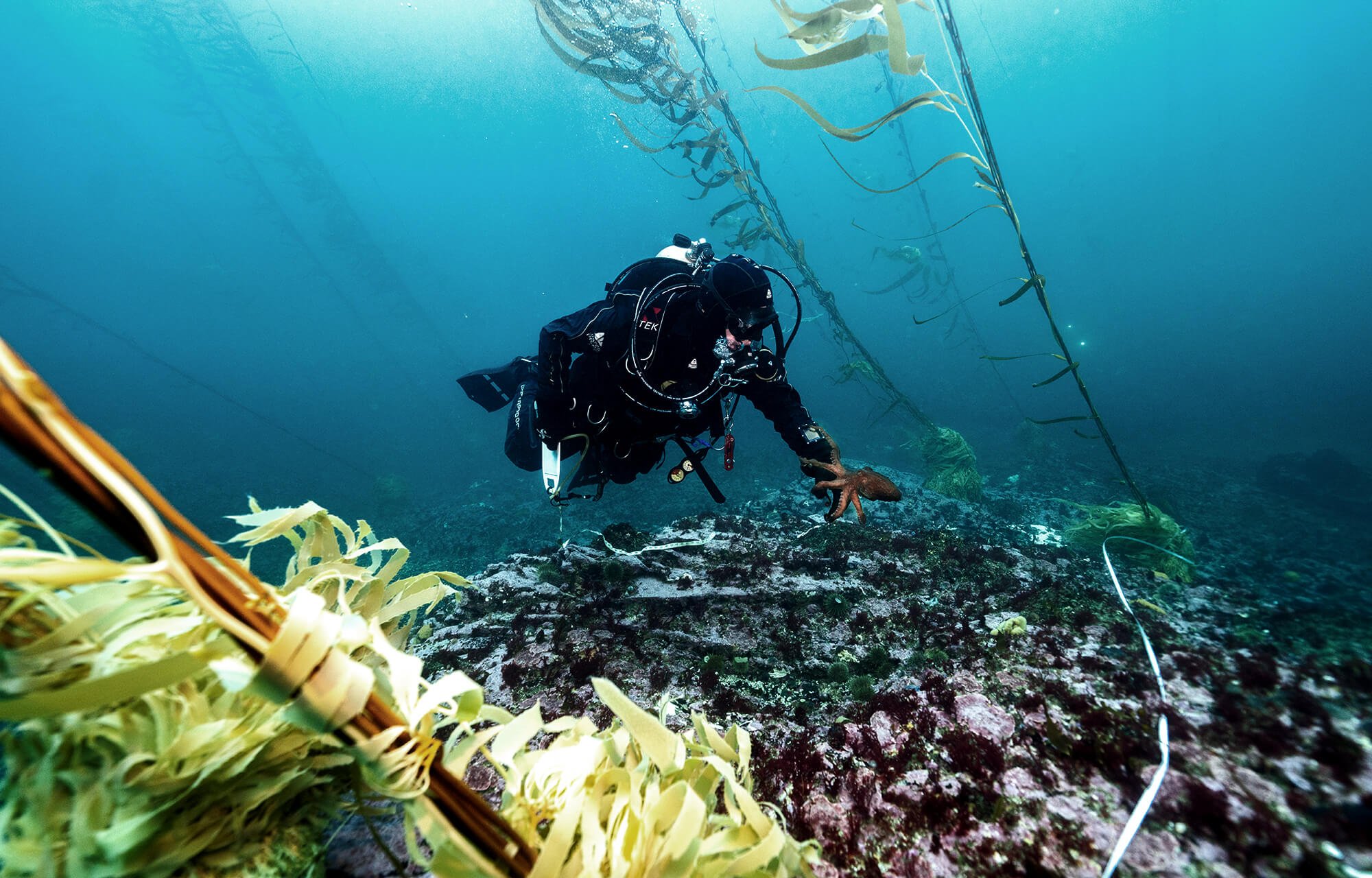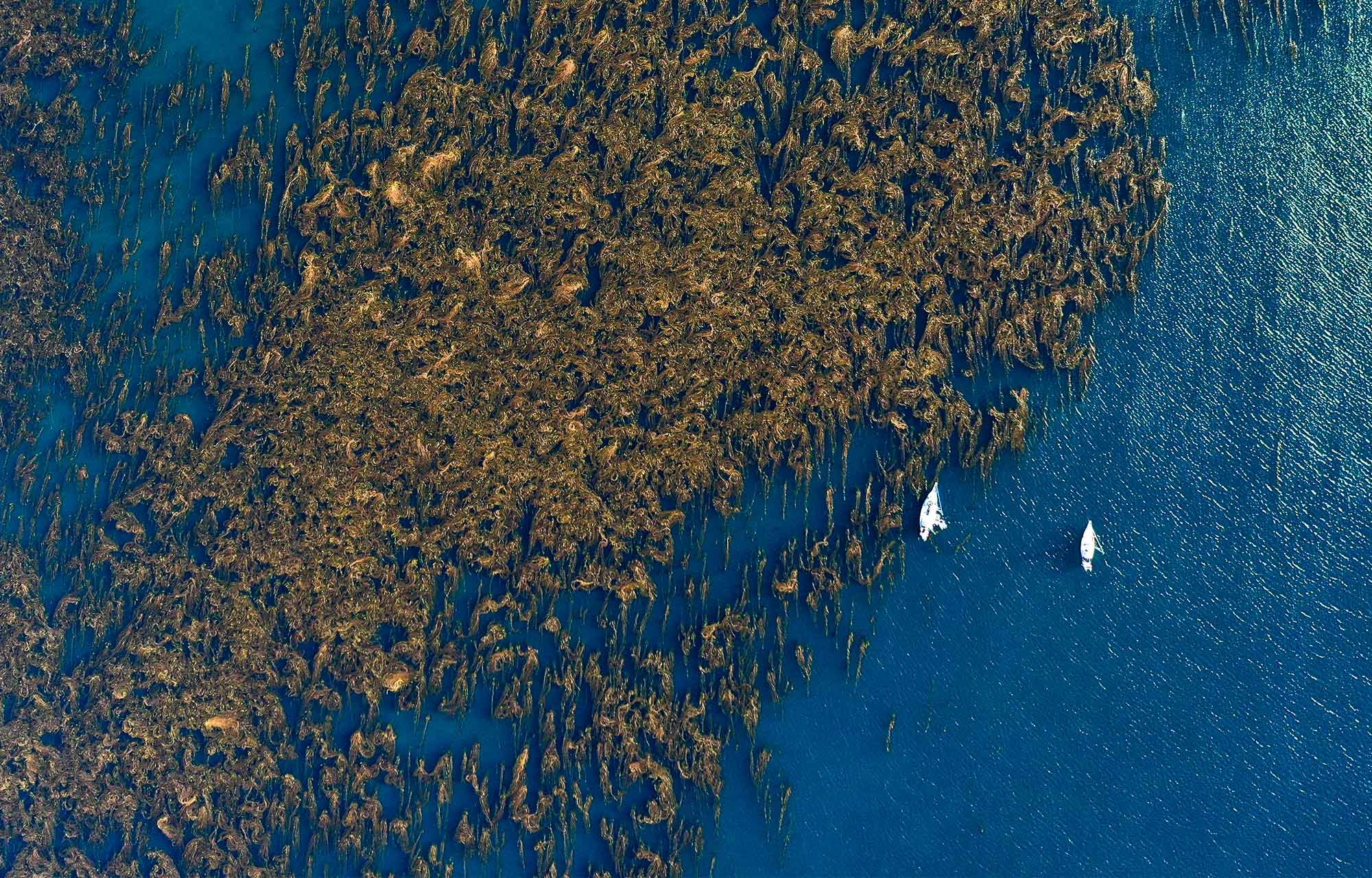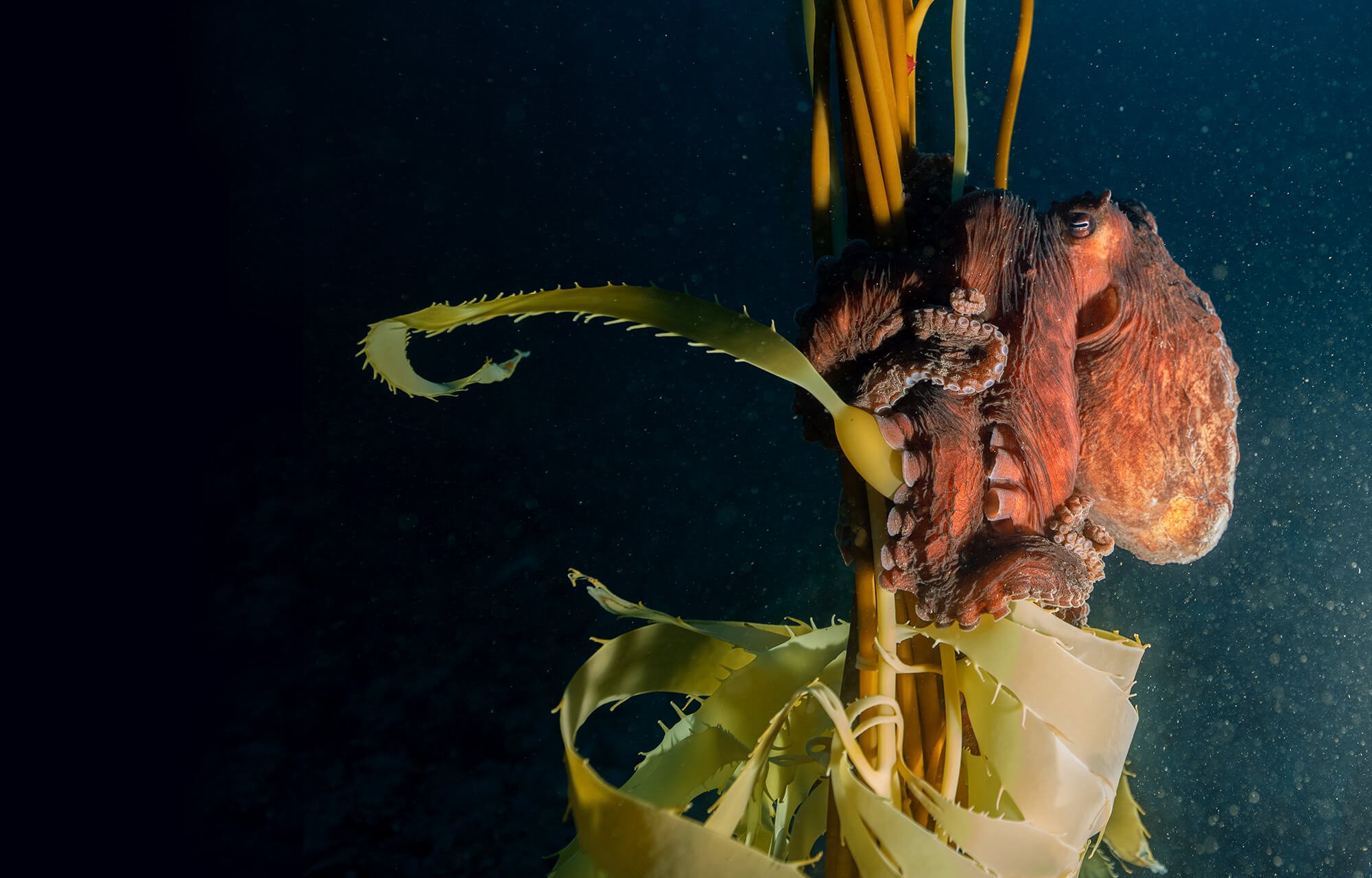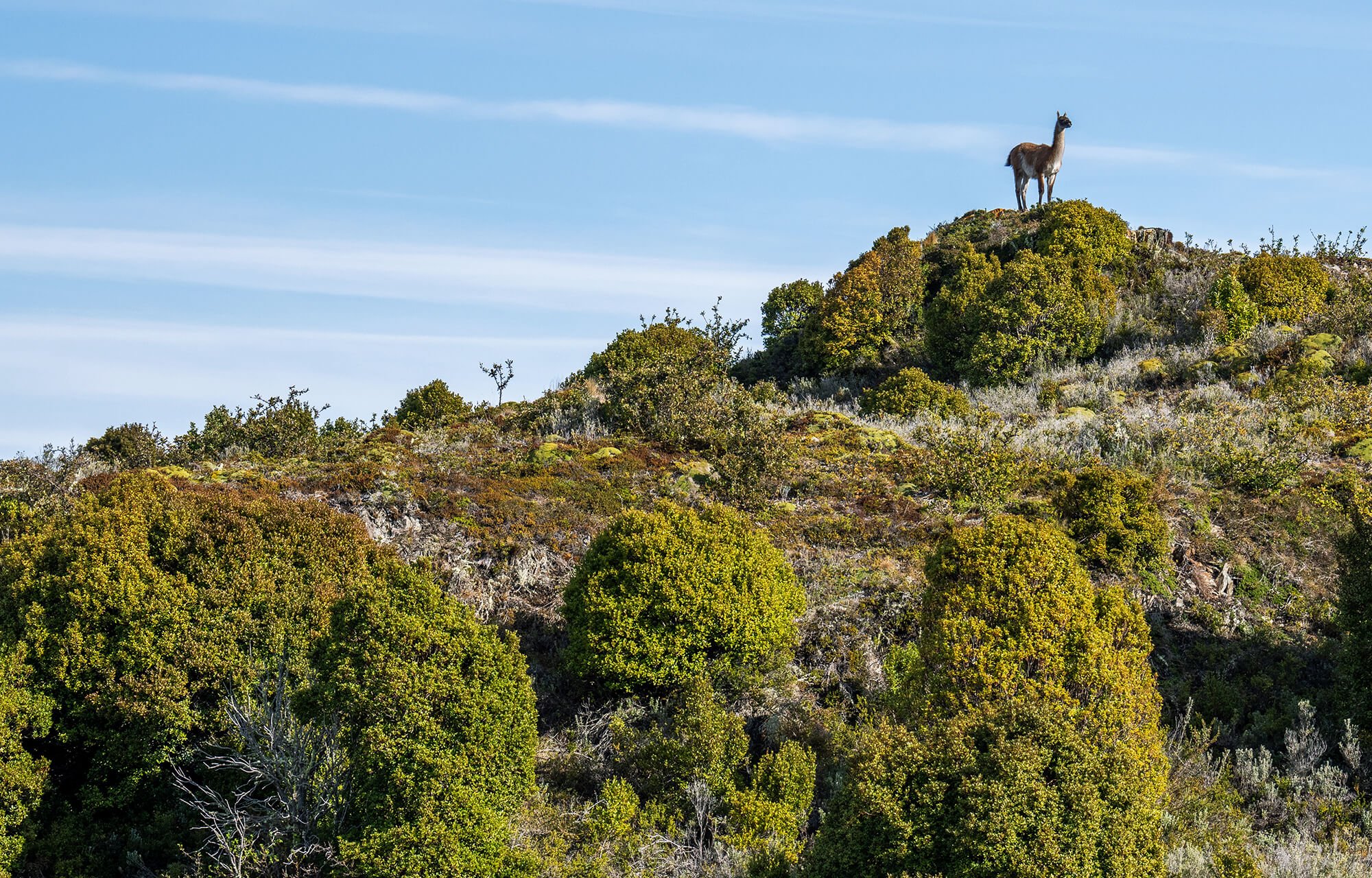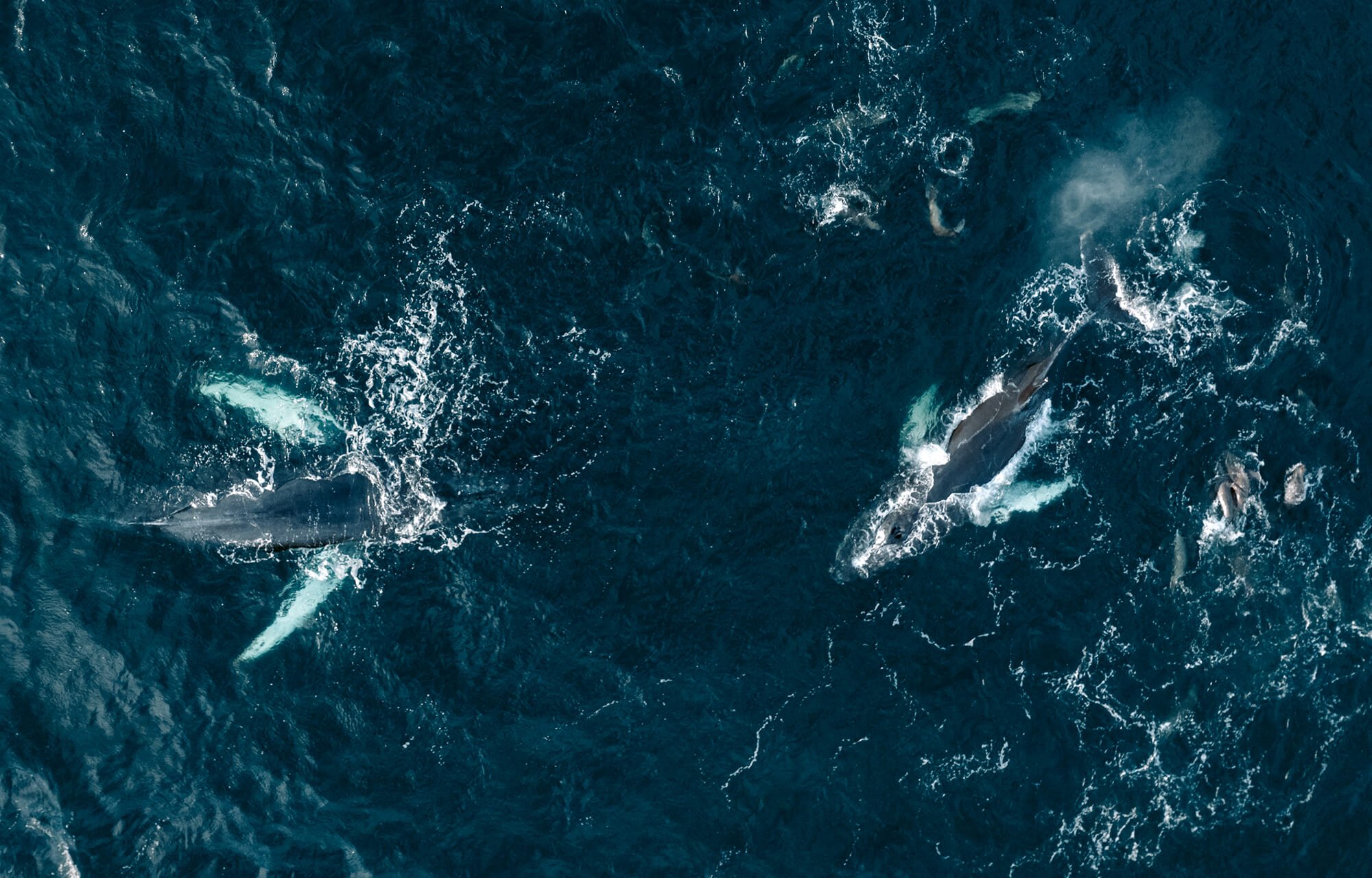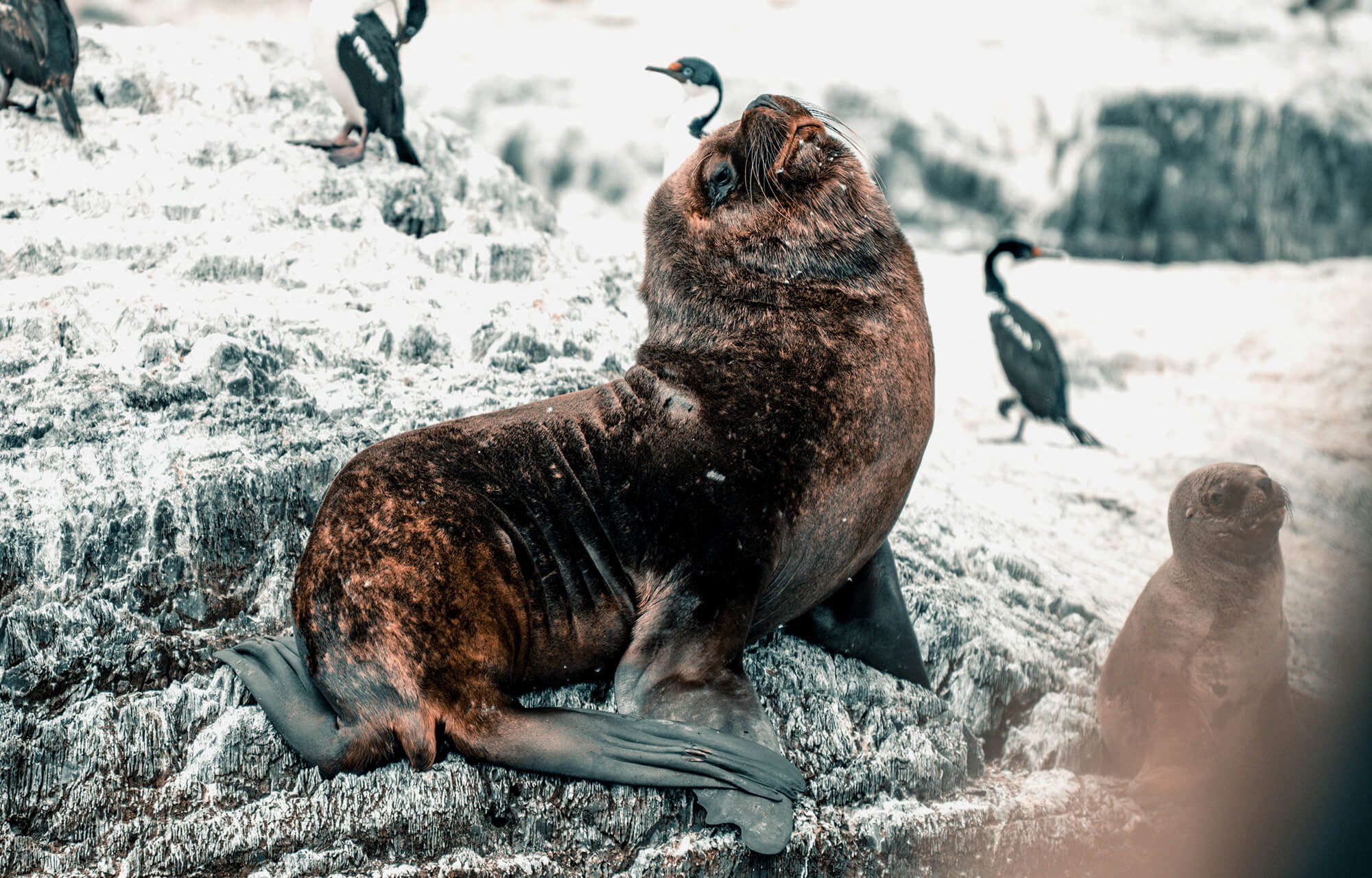SAFEGUARDING SEA FORESTS AT THE EDGE OF THE WORLD
JOIN US ON A JOURNEY TO THE FAR REACHES OF PATAGONIA, WHERE PARLEY AND OUR PARTNERS ARE WORKING TO STUDY, PROTECT AND PRESERVE THE REGION’S VAST KELP FORESTS
At the southernmost edge of our planet, pummeled by unrelenting waves, the vast continental landmass spanning North, Central and South America finally tapers off and surrenders to the southern oceans. After winding down through Patagonia, with its seemingly endless mountains and fjords, the land starts to curve eastward and break apart into islands – as if forced apart by the power of the surrounding seas. Beyond Tierra del Fuego and besides a few final outlying islands, Argentina’s Península Mitre marks land’s true end: a surprisingly diverse region of windswept beaches, rocky coves, carbon-rich peat bogs, sparse grasslands and the final few snow-capped mountains as the Andes range makes its last stand.
“Battered by storms, unpredictable winds and strong currents, Península Mitre sits at one of the most dangerous latitudes for navigation,” explains Cristian Lagger, Scientific Director of Por el Mar. “As we sailed towards it, our boats looked like two tiny walnut shells floating on a rough sea, surrounded by huge mountains and high, snow-capped peaks.”
Alongside Parley and Mission Blue, Por el Mar is a founding member of Forests of the Sea, our initiative to protect and restore kelp forest ecosystems all around the world in line with the 30x30 target proposed by the UN Convention on Biological Diversity to protect 30% of the Earth’s biosphere by 2030. With its extensive kelp coverage and relatively pristine seas, southern Argentina will be a key region in this multinational effort to preserve marine life and help stabilize our climate.
“WE ARE EXPLORING ONE OF THE LAST TRUE PRISTINE PLACES IN THE WORLD”
Martina Sasso — Co-founder of Por el Mar
Together with colleagues at Por El Mar, IDEA/CONICET, CADIC/CONICET and Unplastify, Cristian recently led an 11-strong multidisciplinary team made up of marine biologists, oceanographers, scientific divers, photographers, documentary filmmakers and freedivers to the region. They aimed to study kelp forests with a high density of macroalgae (aka kelp) located along exposed rocky coasts (not closed bays) that hadn’t been previously studied. This made the expedition logistically harder, as the team had to sail out from sheltered areas, conduct dives to around 15m in rough seas, then return to safer anchorages. Beyond exploring and researching Mitre’s kelp forests, a key goal was to help tell the story of a place few have heard of and even fewer visit.
“Beneath our sailboats,” recalls Cristian, “hundreds of macroalgae stretched for miles, reaching the sea's surface and forming a floating marine carpet. Visibility in the water was over 20m, something unusual for the Argentine Patagonian region. I also remember the extreme cold that came over me when I first went under – the water was 5ºC! However, knowing that these sites had not been explored by anyone else made me smile. The sensation was like entering a portal to an unknown dimension, and we felt more and more wonder as we descended. It felt like we were flying among the hundreds of huge columns of kelp.”
Sea forests like the ones surrounding Mitre are crucial for the health of our oceans and the survival of our planet. Stretched like vast green ribbons along colder coastlines in regions ranging from South Africa to Japan, kelp forests capture an estimated 4.5 million tonnes of carbon dioxide each year. They also provide critical habitat for over 1500 marine species and remove harmful nitrogen and phosphorus – purifying the surrounding seawater and helping to balance the ocean’s acidity. Globally, it’s estimated that the global macroalgal biome covers about the same area as the Amazon rainforest basin, and is likely just as productive.
Península Mitre’s kelp forests cover more than 2,000 hectares on the southernmost edge of Argentina. They extend along almost the entire peninsula coastline and are considered by scientists to be one of the most pristine marine ecosystems on the planet.
Its sea forests are home to species of macroalgae like Macrocystis pyrifera, which around Mitre can measure more than 22 meters in height and weigh more than 120 kilograms wet. Together with M. pyrifera, other smaller species of brown macroalgae, such as Lessonia flavicans and L. searlesiana, it constitutes the base and structure of the kelp forests in this area and provides a home for species including yellow tubular sponges, colonies of cushion-shaped ascidians, red and green sea urchins resembling Christmas balls, giant starfish of different colors, crabs, curious red octopuses and sea lions.
“We are exploring one of the last true pristine places in the world,” says Por El Mar co-founder Martina Sasso. “This is where Charles Darwin sailed, and if you go down there to Península Mitre and you open Darwin's books, and Humboldt’s books, and you just take your eyes off the page you're seeing the exact same landscape. I don't know many parts of the world where you can feel this. So many animals aren't used to the human presence, so they're really curious and they won't run away – because they actually haven't seen much of humans.”
“THERE IS STILL SO MUCH TO LEARN ABOUT THIS INCREDIBLE ECOSYSTEM, ESPECIALLY CONSIDERING THEY ARE HIGHLY PRODUCTIVE SYSTEMS WITH ENORMOUS BIODIVERSITY”
Cristian Lagger — Scientific Director of Por el Mar
On land, Mitre’s vast peat bogs and grasslands sequester millions of tons of carbon dioxide too – while providing habitat for species ranging from the Andean condor to the (super adorable) guanaco: a lesser-known relative from the alpaca, llama and vicuña family. Closer to the sea, the peninsula is home to the endangered southern river otter, which needs dense forest cover near freshwater ecosystems to survive. Offshore, the abundance of wildlife is clear as you sail out of Ushuaia and eastwards – leaving civilization behind. This was the route traced by Yago Lange, Parley’s Argentina coordinator, on a separate expedition.
“Mitre is really rich in marine wildlife,” he explains. “We saw dolphins, sea lions, whales and more. Marine wildlife in this region migrates to Antarctica for the rich nutrients and food. It’s the closest point to Antarctica so to be able to help protect it is a huge win for the oceans, and for this biodiverse area.”
Yago, Martina, Cristian and the wider team have been working since 2019 to help protect the southern parts of Argentina, but the long road towards safeguarding Mitre’s fragile ecosystems dates back even further. Over thirty years ago, Oscar Zanola, the first director of the End of the World Museum, proposed the creation of a Cultural and Natural Reserve. Important laws followed in the 1990s that set the stage, but it was only late last year that amazing news arrived. After years of combined work by local communities and NGOs, legislators in Argentina’s Tierra del Fuego Province passed a law permanently protecting Península Mitre by creating a vast 1.2-million-acre Natural Protected Area spanning both land and sea.
“This new protected area safeguards Argentina’s biggest marine and terrestrial carbon sinks,” explains Martina. “Of the 10,000 square kilometers protected by the new law, 6,800 correspond to the marine part, so this adds a lot to the 15,400 already protected in this country. But as things stand, less than 10% of the surface of the continental Argentine sea is protected – so there’s a long way to go.”
On a global scale, 38% of the world’s world forests have seen reductions in size over the last 50 years. Locations in Canada, Greenland and California have seen worrying drops, but investigations at the regional scale around Península Mitre using satellite image sets, aerial photography and in-situ studies have not shown changes in recent decades in kelp canopy cover, density and distribution. These promising findings could offer lessons on how best to protect sea forests in other regions.
“Argentine Patagonian region (SW Atlantic) kelp forests are considered one of the most unexplored and little-studied places in the southern hemisphere,” says Cristian. “There is still so much to learn about this incredible ecosystem, especially considering they are highly productive systems with enormous biodiversity. Currently, through a National Geographic Project that’s also supported by Por el Mar, we are working on estimating the amount of carbon these forests capture and store – and how much that represents on a global scale. The more we learn from them, the more we realize their enormous importance in naturally mitigating the current climate crisis. Historically, we have underestimated kelp’s contributions to numerous ecosystem services vital to our survival. It's time to change that!”
One of the main objectives is to build on last year’s legal success and establish a vast 2,900 km corridor encompassing coastlines and kelp forests in the Provinces of Tierra del Fuego and Santa Cruz. It’s an ambitious plan, but it would go a long way towards ensuring the health of the region’s oceans – and put Argentina firmly at the forefront of global marine conservation efforts. As Yago concludes: “We, as Argentinians, we have something good to protect, we are a superpower in terms of nature. We have a huge country, so we need to expand our responsibility and our way of protecting it.”
LEARN MORE ABOUT OUR WORK
Text: Chris Hatherill
Photos and videos: Jose Reyero and Marko Magister
Illustrations: Lucy Han



